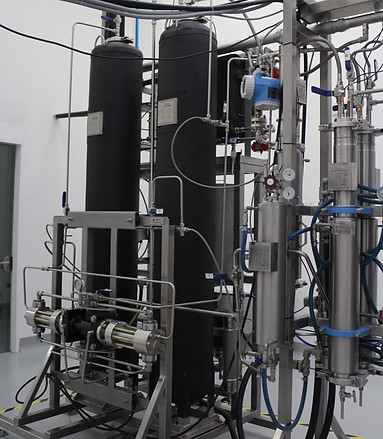
CB1
CB2
CCB1 + CB2
ENDOCANNABINOID SYSTEM
TERPENES
linalool
lemonene
Myrcene
a-pinene
FLAVONOIDS
Canflavin A
Luteolin
CBDV
CBG
THC
THCV
CBD
cbn
CANNABINOIDS


ENTOURAGE EFFECT
While the cannabinoids tetrahydrocannabinol (THC) and cannabidiol (CBD) are the most well-known components, cannabis trichomes actually contain a wide variety of different compounds, from various cannabinoids and terpenes to flavonoids.
-
The harmonic interaction between these various chemical compounds, known as the entourage effect, gives each variety and plant its own unique effects.
-
A combination of cannabinoids, terpenoids, flavonoids and more, translates to an evidence-based exploration of the Entourage Effect inCannabis Sativa L.
-
The entourage effect describes a phenomenon in which all the compounds in cannabis, including cannabinoids and terpenes, act in synergy to produce a specific psychoactive or therapeutic effect. That is why different strains have different effects, because each strain produces a slightly different combination of compounds.
WHAT’S THE DIFFERENCE BETWEEN THE INGREDIENTS?
Our extraction process in Blueberries, through supercritical CO2 fluids, allows us to determine which type of spectrum corresponds to the products we manufacture, whether Full Spectrum, Broad Spectrum or Isolate.
It is important to understand the differences between the 3 sources of cannabinoid spectrum used in the industry, in order to determine which of these should be used in the specific application requested, according to the expected functionality of the phytochemical potential of Cannabis in the final product.
Full Spectrum
cbn
CBG
CBD
CBC
THC
Whole plant
Broad Spectrum
cbn
CBG
CBD
CBC
Whole plant minus THC
isolate
CBD
Just CBD
Each spectrum has unique benefits and does not determine the quality of the ingredient. While CBD and THC are two of the most recognized cannabinoids in the scientific community, it should be mentioned that the phytochemical potentiality of Cannabis is not limited to primary and secondary cannabinoids. Each Cannabis genetics provides us with other molecules such as terpenes and flavonoids that can be found in each spectrum as follows:
Full Spectrum:Contains proportional amounts of cannabinoids, terpenes and flavonoids from the genetics of the flower, which was subjected to supercritical CO2 extraction technology.
Broad Spectrum:It contains proportional amounts of cannabinoids, terpenes and flavonoids typical of the genetics of the initial flower, however, this product goes through an extra remediation process through which the THC is removed. Therefore, THC becomes Non-Detectable in a Certificate of Analysis (CoA) of the final product.
isolate:Through a crystallization process, a purity greater than 99% is ensured of only 1 of the cannabinoids required: CBD, CBG, CBC or CBN.


SUPERCRITICAL FLUID CO2 EXTRACTION TECHNOLOGY
Our Extraction service represents a comprehensive solution for strategic allies, allowing the delivery of standardized resins, even with a CBD:THC ratio different from the starting ones, reaching up to a Broad Spectrum.
Supercritical fluid extraction technology in Cannabis uses high pressures and different temperatures to modify the physical properties of COtwo, making it an extraction medium. The dried and ground CBD/CBG/THC flower, to a specific particle size, is loaded into the extraction chambers and allows to maximize the yield of Extract per Kg of extraction.
WHY SUPERCRITICAL CO2 EXTRACTION TECHNOLOGY?
Based on the nature of the closed extraction/recovery system, CO2 does not carry contaminants such as pesticides or heavy metals between batches, as can occur in ethanol-based technologies.
-
Through specific process variables, the polarity of the solvent can be modified, thus maximizing the recovery of metabolites that are not limited to CBD and THC alone, but also others such as minor cannabinoids, terpenes and flavonoids.
-
Given the behavior of CO2 as a gas at atmospheric conditions, it is possible to recover it without heating the derivative, guaranteeing zero solvent residual.